I was invited to speak, and participate in a panel, at Image+Nation. It’s a LGBTQ film festival that takes place in Montreal. The event was organized by Tech Witches and held at Never Apart. I shared some pictures on my instagram if you want to get a sense of that space.
It was wonderful to participate in something like this, with a total focus on queer culture. Queer culture makes me feel alive. I adore the art happening there.
(tiny coming out psa: i’m Bi & my pronouns are they/them or she/her. tho i love they/them the most. thank u!)
The event that I participated in was described as:
“On the margins of the big studios are digital creators who aren’t required to follow anything other than their own whims. Sometimes playful, sometimes strange, these queer artists bend and blur the lines between mediums. The work they make often exists between games, poetry, networks, and junk: they create media which is as queer as them.”
So, in my workshop, I discussed personal games, surrealism in games, and all these interesting intersections. I showed a lot of “Everything is going to be OK”.
I was meaning to show work from other devs too (maybe not all of them queer, just very on point), so that it wouldn’t just be my work discussed, and to illustrate how all these ideas are connected. There were technical difficulties tho, so I’m writing about them instead…
I feel like a lot of altgames takes place as kind of a train of thought. One person has an idea, and another person adds to that idea in their own way, and another runs in another direction with it… so it’s kind of like an ongoing artistic conversation.
Abstraction, and that sense of being in a machine that you have to figure out (a flavor that a lot of altgame walking sims offer) is something very special.
I love the feeling of being dropped dead in the middle of something, and I have to get to know it now… like interacting with, or inside, of a strange alien device.
I mentioned in the workshop that it’s a lot like getting to know a person. As you figure out how to function in this otherworldly environment, or interface, it grows on you. It’s a wonderful concept to apply to personal games because you form kind of a connection to the game’s message through that effort. That type of interaction can be very meaningful.
Dropping a player in the middle of something, without explanation, or context, and they have to pay attention, makes messages a lot more impactful.
Some examples…
(Tho I suggest you play these on your own. Don’t just read about them.)
* Conversations We Have In My Head by Squinky
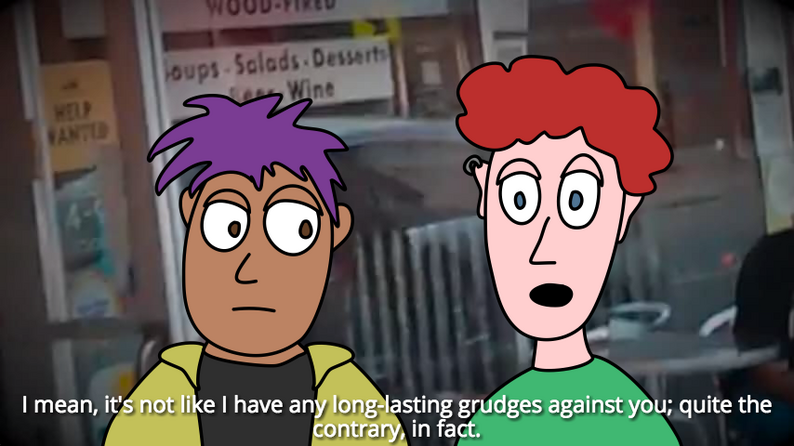
Conversations We Have In My Head drops you in the middle of a conversation between, what you assume are, two friends. You click on the dialogue to explore the introspection going on.
As you let it play out, the friend fades away and you realize that the entire conversation taking place was in your head (as the title implies). What I loved about this was how it hit you in the end with that by slowly building up to it.
I also enjoyed that it can play out without interaction. You’re optional, literally, you’re transient. Just like the imaginary friend being talked to.
I tried doing some of the “interaction is optional” with my other work as well, and I think the framing of that is interesting. Players are optional, the game doesn’t need them, but it’s nice to have them. Rather than reinforcing the importance of the player, you almost “reject the player”, and that can be kind of interesting. Especially when communicating emotion. It’s moody.
To me, what was important about Conversations We Have In My Head was the buildup to that end punch line; your friend was in your head.
Another game that I feel is structured similar, and has a similar impact because of buildup…
* OASES by Armel Gibson (@gib) and Dziff (@dzifyr)
(Both gib’s and dzifyr’s work are amazing, and you should check them out)
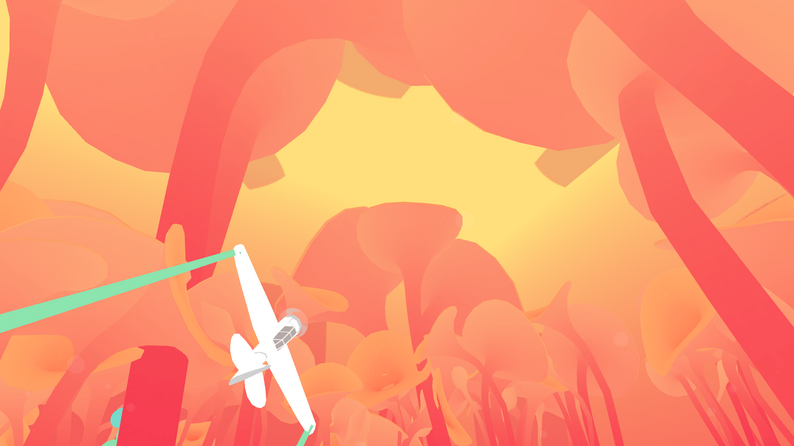
Oases is a special piece. You are an airplane and fly around in these very surrealist environments.
It doesn’t really make sense as you do this, but it’s beautiful to fly through. It kind of takes you back to when you where a kid, and play pretending flying around the house with toys. It feels like a dream.
You’re just in this wonderful space, and you’re free. It kind of works between childlike wonder, and a feeling of freedom, using that airplane.
At the end it reveals that
[SPOILER / ]
“My grandfather’s plane was reported lost in 1960 during the Algeria Independence War, days before the birth of his first child. This is what I like to think happened to him.”
[ / SPOILER]
(Disclaimer: I have very bad memory and speech dyslexia so I totally slaughtered this ending description in the talk. I mentioned that then, but sorry kinda embarrassed at how poorly I communicated that lol.)
The buildup to that was beautiful. I thought it was almost chilling, like “oh wow, that got deep.” It’s this wonderful personal vignette.
Both of these games build up, and then give you this personal punchline in the end.
I say “punchline” because personal games are often structured like comedy.
At least that’s what it feels like for me. I’ve done a lot of both, and the approaches are often the same.
When you give away something personal you often hint at it first, before completely revealing it. Framing really matters, just like comedy.
I feel like if you are going to make personal games that talk about deeply sensitive, or vulnerable subjects, then you should try practicing by making a few comedy things first.
If anything then just for the sake of preparing yourself for how people interact with you work, and especially, how cruel toxic-player culture can be if your thing gets singled out by angry gamers.
For personal games, especially when you’re really exposing yourself in your work, that can be very hard. You’ll be treated as the object of punchlines, and personal stories are completely open to commercial criticism, in the most hostile possible way. What you share can get used against you to form personal attacks. That’s the worst in a nutshell. It might not happen, but when it does it’s something you should be aware of. I speak from personal experience.
I suppose comedy games, and personal games, both have their hecklers.
I make this point because a lot of my games have gotten many Let’s Plays. Most of them were wonderful. I realize that I talk about this part of gaming culture a lot in a negative light, but it’s been a difficult sphere to navigate. I don’t hate, or dislike, Let’s Players. I enjoy them, but there are aspects of it that can lead to toxicity, especially for games like mine.
For example…
Anatomically Incorrect Dinosaurs was a very popular one for a while to Let’s Play.
In case you don’t know it, Anatomically Incorrect Dinosaurs is a comedy game where you construct dinosaurs in ways that they can never look right. The procedural generation doesn’t allow for accuracy, and the dinosaur is protesting in horror for what you’re turning it into.
Subliminally, and I’m surprised that nobody picked up on this, it’s about body dysphoria and how you are forced to conform to the physical norms set by authority figures (institution, and culture). I never shared that, but that’s the unspoken meaning…
The game became kind of a meme in the YouTube crowd. I genuinely enjoyed most all of the videos, even the yelling in fake shock and horror at how bizarre the game was. It was part of playing along with the gist of the game.
A few larger names played it too. Toward the end, when that meme was wearing off, Vinesauce played it. In comparison to all the other videos, that made similar jokes about drug use, and not knowing what is going on, I found his to be super demeaning.
Jokes went in the direction that I must not be of sound mind. Like you don’t want to meet this developer. I paraphrase. Don’t feel like looking it up for a direct quote.
I noticed that there are some personalities that build their brand by shitting on these games, and using them to inflate that brand. Not because they love these games, but because laughing at them makes their personality popular.
Whenever this person has played my games I kind of have to duck away from the internet because it brings in gross comments directed at me. Which makes sense. If you say stuff like that, you signal to your audience that it’s ok to treat these games and their developers this way.
So… long story short, it’s very difficult when something like this happens to a game that’s personal, vulnerable, or talks about topics that are difficult to talk about but should be talked about in a thriving art form. You will get personal attacks for it.
Try comedy games first to get an introduction to this environment. It’s good preparation.
I also mentioned this in my workshop; another interesting observation, in line with this YouTube Let’s Play tangent, is the reappropriation of messages from marginalized people and turning these messages into a form of hate speech that hurts marginalized folks.
In performance of the work from the marginalized artist, and the derogatory way you present these messages through your performance, you hurt people from these groups that have had similar experiences.
The performance changes the message the piece was originally making, and you reframe it in a derogatory sense.
For example both Vinesauce and jacksepticeye played Everything Is Going To Be Ok. Both times they used the tropes of yelling insults at the game.
The game talks about very difficult things, and the framing of it is important. It’s best played in peace, and actually listening to what’s happening (not yelling dumb jokes over it). Some people watching where hurt.
I’ll try to make this point even clearer… Portions of Everything is going to be OK are about surviving rape. Page 11 is about that trauma. It’s abstract so anyone can read themselves into it. It’s an effort to talk about extreme hurt, and reconcile with that… then if you read the writing (poetry and essays) you understand. It’s about very severe trauma.
It’s supposed to be a discussion about that, and you find empowerment at the end. It’s a personal conversation between the author and the person engaging with the work. The work should, in cases like this, be engaged with respectfully.
If you play something like this, as a straight white dude yelling dumb jokes over it, it’s hurtful to people who have had a similar experience. It changes the message from the original intention of the author, to a hurtful one obscured by the typical tropes of insults from the performer.
The meaning of the work gets reappropriated.
This is not an easy space to navigate for marginalized folks who are sharing their stories. It’s especially damaging because it deteriorates the topics that the work discusses into being harmful.
It’s no longer about talking about trauma, it’s about making fun of something that talks about trauma.
I have no idea how to deal with this except for telling people to get ready for that, and the toxicity that draws in.
On a positive note a Let’s Player called SirTapTap covered “Everything is going to be OK” and I really enjoyed it. Despite using some of the typical jokes, it wasn’t derogatory. As an example in the real world; these jokes don’t have to be hurtful.
So, back to the main topic…
Surrealism is an amazing way of clouding reality so that it offers space for others to explore emotions, feelings, rather than literal messages.
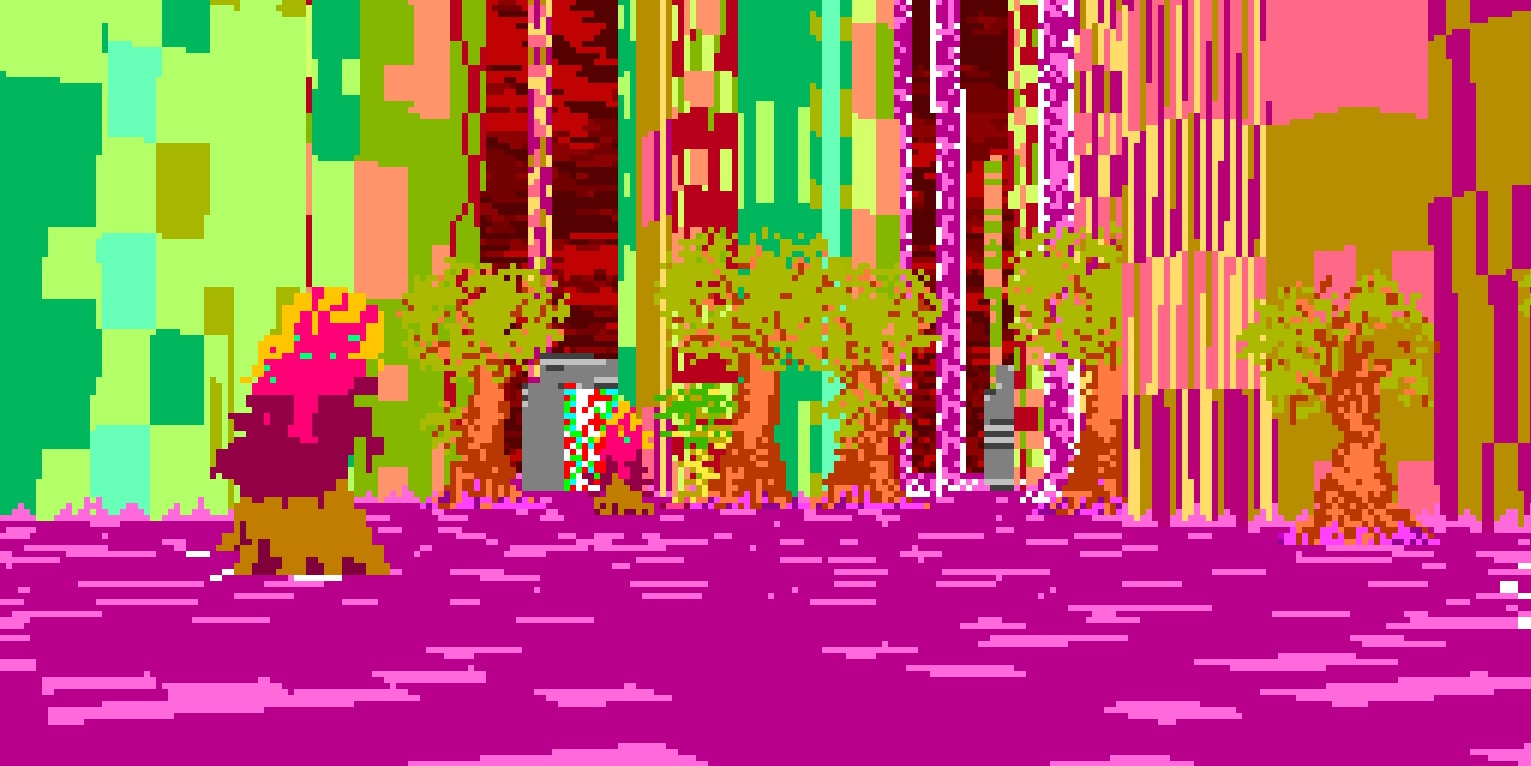
Trip Gate is an amazing gem. Unfortunately it crashes in windows when you get to the first maze, but I suggest looking it up on youtube (this is a good Lets Play)
It’s a dizzying environment where colors just melt and overwhelm. Nothing makes sense, but then again it kind of does.
I think games like this are pinnacle to what games can offer. Just surrender reality and enjoy the bizarre journey. The player doesn’t need to be in control, not even of coherency.
Art doesn’t have to make sense, sometimes it’s good just to go with it and see where it takes you.
Trip Gate is a very meaningful example of this. You could just melt into it.
* Dream Warrior by Paloma Dawkins
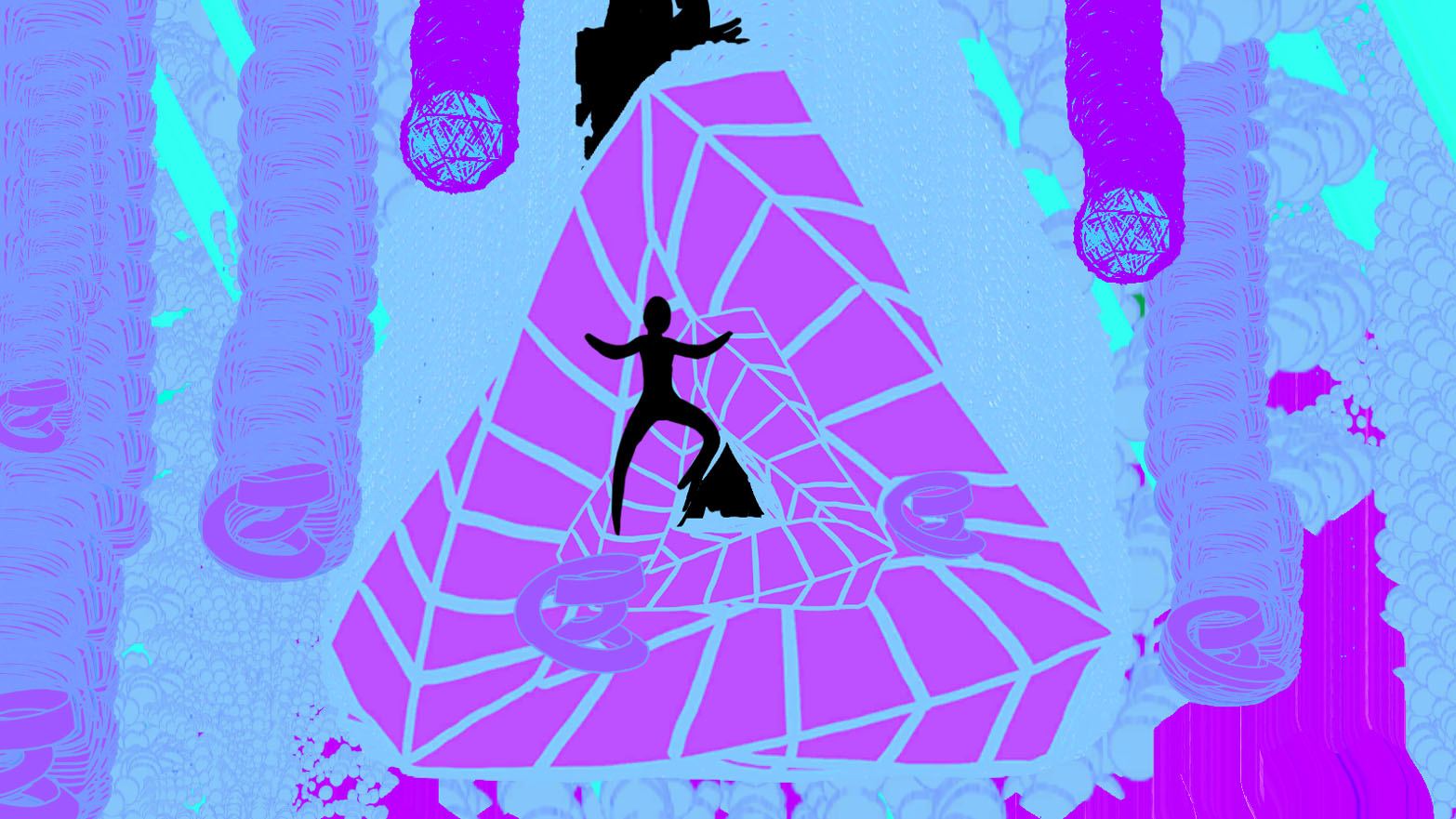
Dream Warrior is kind of in the same vein as Oasis. You fly, or swim, through a melting world of colors and beautifully animated motion. It was my introduction to Paloma’s work, and all her stuff is just as stunning.
I think there’s something to be said about how just looking at things is enough. You don’t have to accomplish, or achieve, or win, or lose, you can just look and take in a space.
It’s an alien space. Something that can only come from the person that made it. This makes it a one in a million game. For things this unique, and true to the creators style, it’s special because nobody else could have made it.
These things are bravely unique, so experiencing them is like entering a rare reality that exists as a tiny blip in the electronic world.
Just as Trip Gate crashes after a Windows update, and no longer functions, (I’m guessing it’s a windows update that eventually broke my ability to run it), these things are to be taken in and appreciated for the small amount of time they exist.
In a sense… for how vague, obscure, incoherent, seemingly impractical to the rest of the industry these games are, they are rare gems to be appreciated.
Maybe even too endangered for how undervalued they are as compared to IP’s from big figures like Nintendo. I mean, there will always be fans bending over backwards to preserve the childhood nostalgia from these mainstream giants, and this results in a very commercially oriented video game history, but will people invest the same amount of effort to preserve such obscure altgames? I hope someday that will be a thing.
Importance is measured by financial success, and fanbases, not really by the courage to make something unique. Maybe that will change as we carve out value for this work… but examples people throw at me as counter arguments to this are also very mainstream, and “safe”, in comparison. In the grand scheme of things, we seem to only value successful commercial things. So it’s a value judgement lost to capitalism.
In my opinion it’s specifically this work, by solo experimental creators, that makes the difference. It’s under appreciated, but so vital to the creative discussion. Without it, games would be very monotone.
Which takes me to Cassie McQuater’s work…
* No Fun House by Cassie McQuater
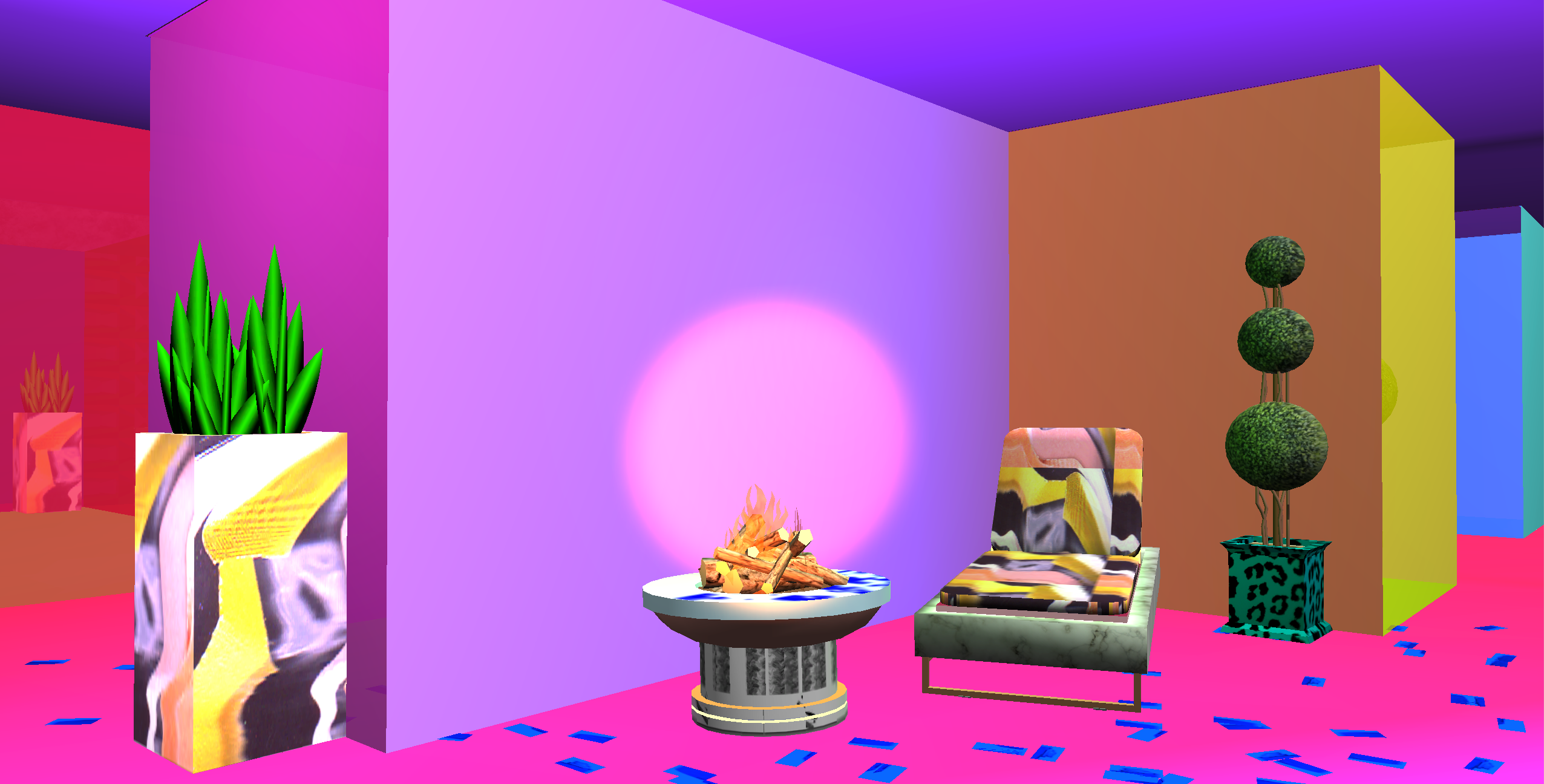
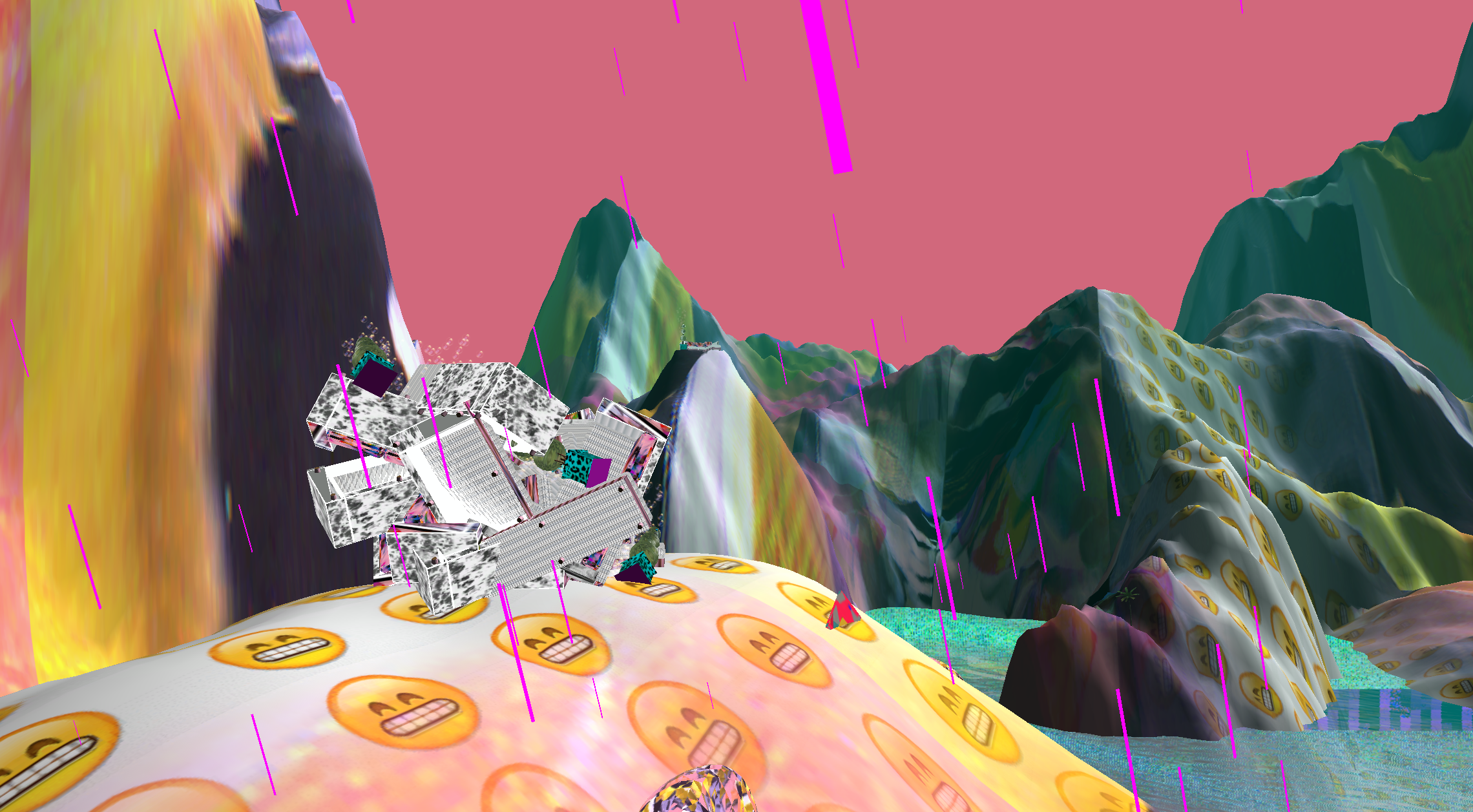
No Fun House is something that only a net-artist could make. It features all the goods but in the form of a walking sim. I think it’s stunning.
The initial space you’re dropped into is split between sophisticated and out right tacky. The high end modern furniture, and feel of a modern art space, kind of bastardized by stupid emojis and gifs art.
It’s kitschy in the best possible way.
You walk around and these prompts appear at the corner of your screen. Things like “Can you relax?”
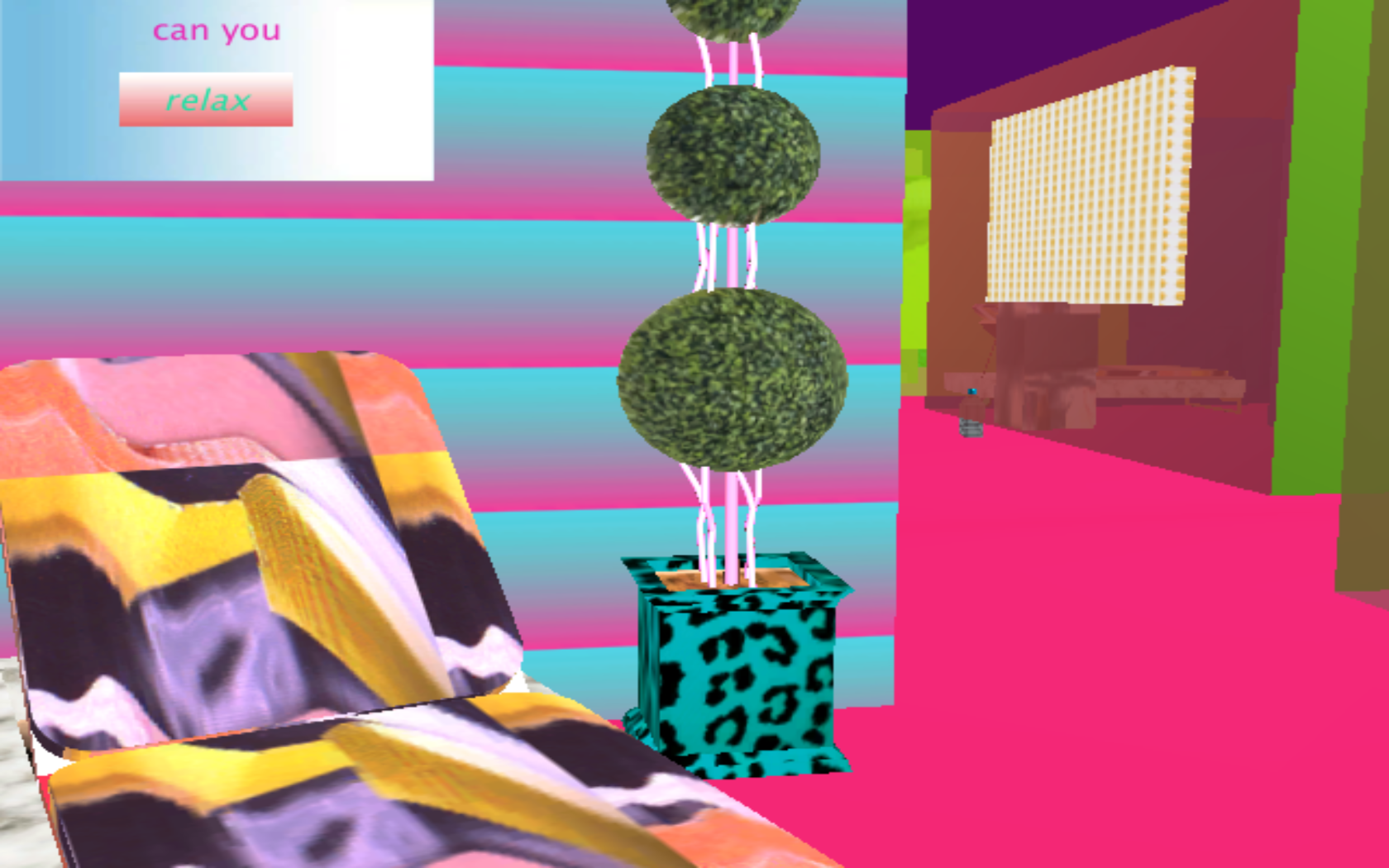
If you click on those prompts, it will take you to a new space.
This is why I love No Fun House. Once you figure out how it works it takes you from one space to the other, and it’s quite a trip. You don’t need to understand it. You just need to feel it.
That’s why stuff like that is beautiful. It’s the feelings of confusion, curiosity, appalment, sometimes awe from being stuck in something so alien…
It’s lovely how it changes themes, and spaces, on you without explanation.
It doesn’t need an excuse to do what it does. It just does it.
I found that inspiring.
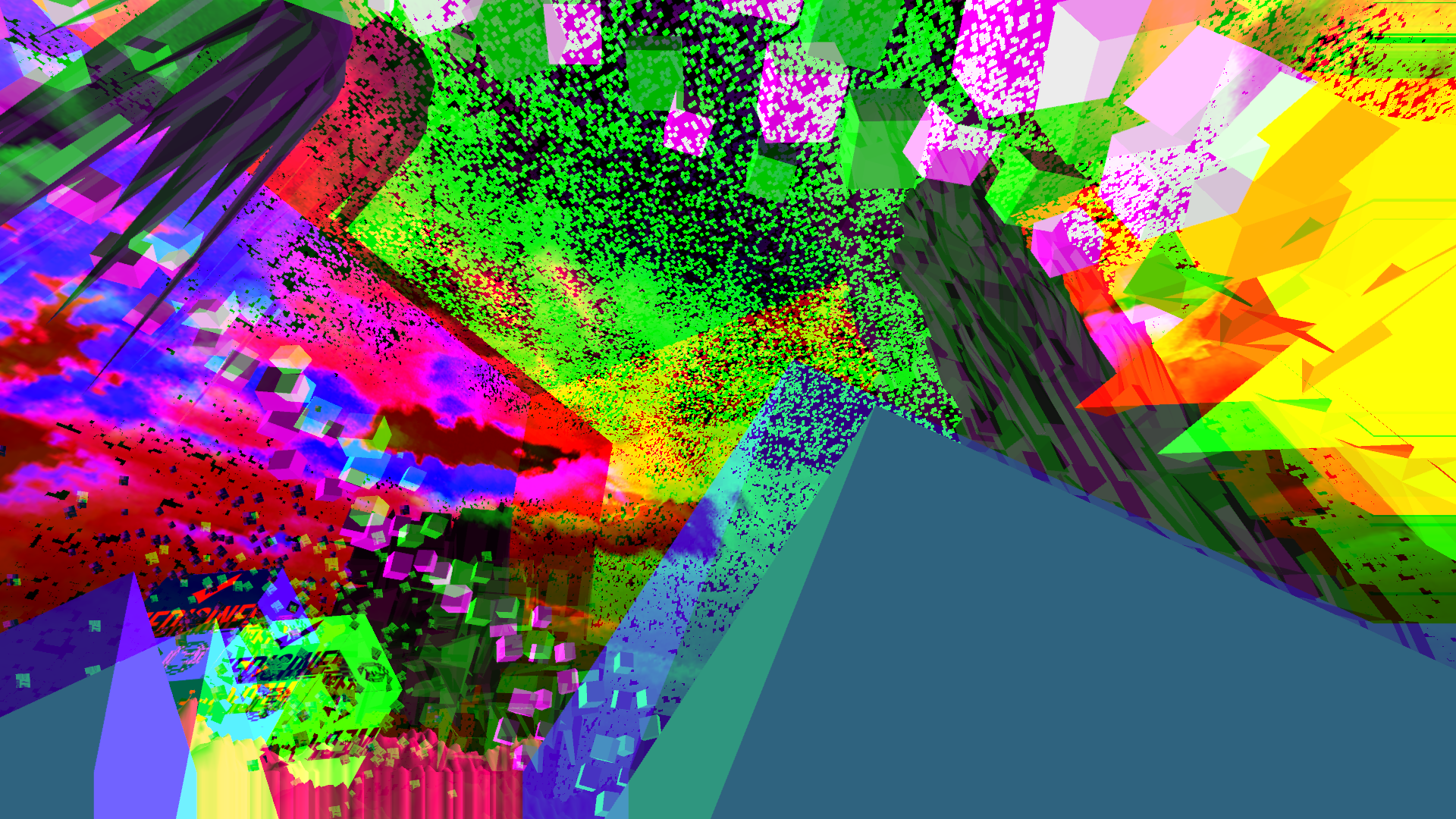
N0C1iP exists kind of in the same gist as No Fun House.
Funny story is that I lost it for a while, and couldn’t remember what it was called, and had all these ideas of this bizarre altgame that I couldn’t remember.
I love it when you try piecing together a game from vague memory. You remember your personal interpretation of it, and sometimes it’s nothing like the game you remembered. Altgames generally feel like that. Someone trying to piece together a memory of “a game”, any game, vaguely grasping, and it ends up being nightmarish, glitchy, supposedly broken, incoherent, bizarre dream fuel…
N0C1iP is very nightmarish and dreamlike. It’s a visually intense landscape that demands your attention, and you must explore it.
* Hoots in Cage by Titouan Millet
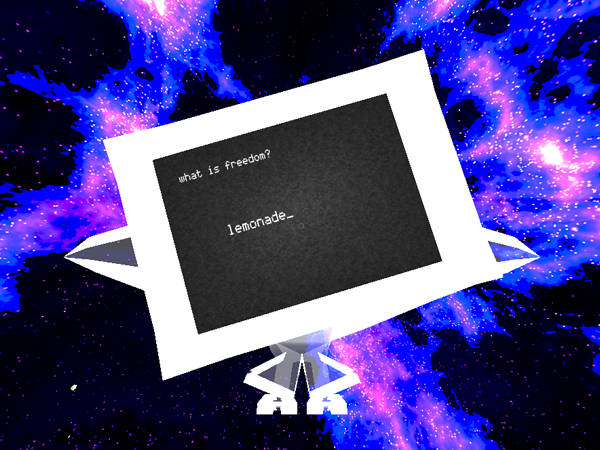
Hoots in Cage is a special one to me. It communicates metaphor very well. You find yourself inside a space, it seems infinite, but if you start pressing spacebar at the “edges” of that space it starts to collapse. Space was an illusion, and you’re actually inside of a box. There are owl like creatures that you talk to, and they say very interesting things. You do have to pay attention, and you probably want a walk through (if you’re like me). This is a good video to watch, but you really should play it for yourself.
It’s profound because of how it messes with dimensions, distance, and confinement. I found playing it very introspective.
Visually overwhelming environments can do that for how they all have their own language. If you get used to the bombardment, or unusual aesthetic, you start seeing these intentional patterns that where built into them.
Hoots in Cage has you destroy that space, No Fun House gives you prompts that you otherwise wouldn’t notice if you’re not paying attention, and open to experimenting with how you interact with it.
I really love these concepts because it’s up to you to figure it out. No, or vague, instructions are given. You learn how to listen to whatever setting you’re placed in.
* Secret Habitat by Strangethink
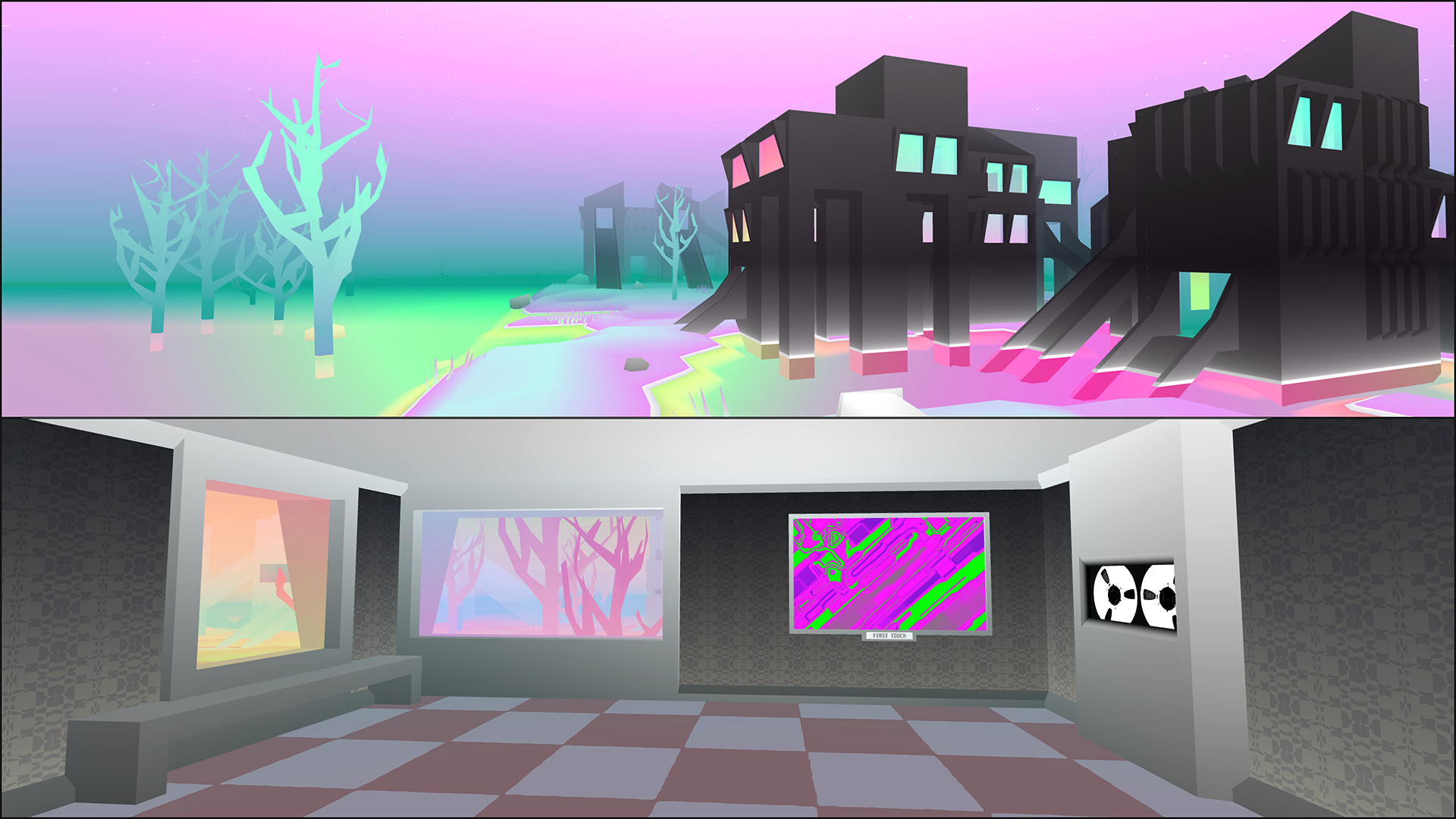
Strangethink’s games are all amazing and something you really should experience. They’re generative psychedelia. I find being in them inspiring. Secret Habitat speaks to me because it’s all up to personal interpretation.
You’re on an island with generated buildings. The buildings are kind of like art galleries, and the art is generated.
The rooms have random soundtracks in them that are associated with the art.
It’s all very generated, random, but somehow you manage to read meaning into it. I think this captures procedural generation beautifully, especially in an art context. It’s a construction between the creator, and the machine. You end up making sense of the absurdity.
In these contexts such as buildings, environments, spaces, it makes a lot of sense. I love how you can lose yourself in it.
Meaning is implied.
* East Van EP’s Star Swim by ceMelusine
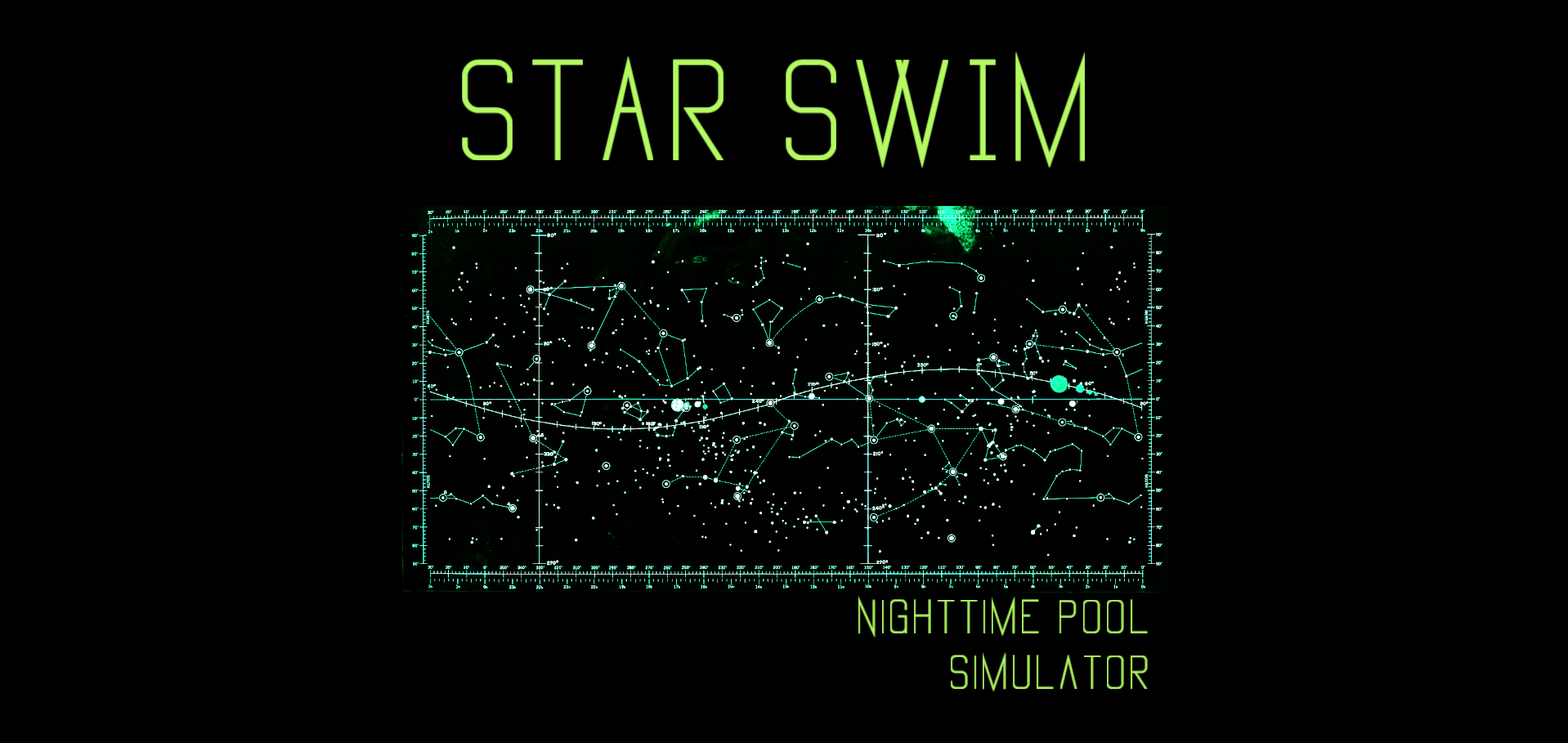
I consider East Van EP something of an important piece in altgames. It’s moody, kind of silly at times, and features some lovely dark spaces. The entire collection is worth buying and exploring.
My favorite one is Star Swim.
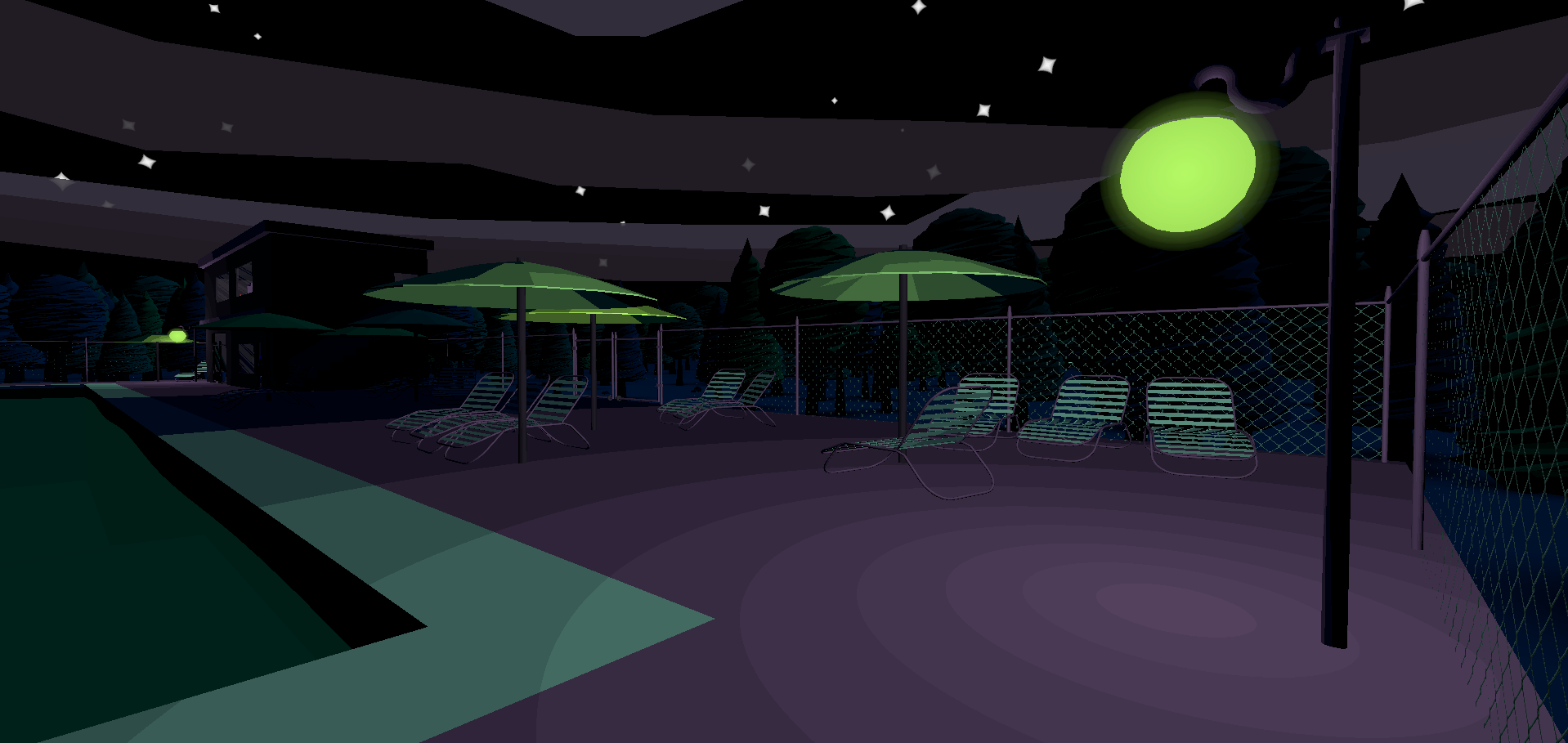
Like most of the games here, Star Swim also offers no explanation. You’re dropped in the middle of nowhere. There’s a swimming pool area. You go explore it.
It seems normal until you find that secret.
I don’t want to spoil any of it, but I loved how reality melted away the way it did.
Where some altgames start completely bizarre, this one made sense, and then suddenly didn’t. Things dissolved into surrealism, and the way it built up to that loss of reality was beautiful.
It’s kind of like Oasis but in reverse.
I think something can be said about how games can switch mood so impactfully. You’re in a space, you get used to a certain consistency, and then everything changes. That change can communicate fairly powerfully if you work your own meanings into it. I think consistency in games is overrated. It’s beautiful if you break from the pattern you’ve established.
I think games often get boring if you’re too strict with maintaining a certain consistency, or direction. In themselves, games are very repetitive environments. Our idea of “play by mastery” means that you’re stuck in a lot of that repetition, and that’s a bit frustrating in some ways. This is why I love altgames like this. They’re surprising.
* t- e ni h?m-are of·`a c ty ? th_ught ‘i k?e w by Pol Clarissou
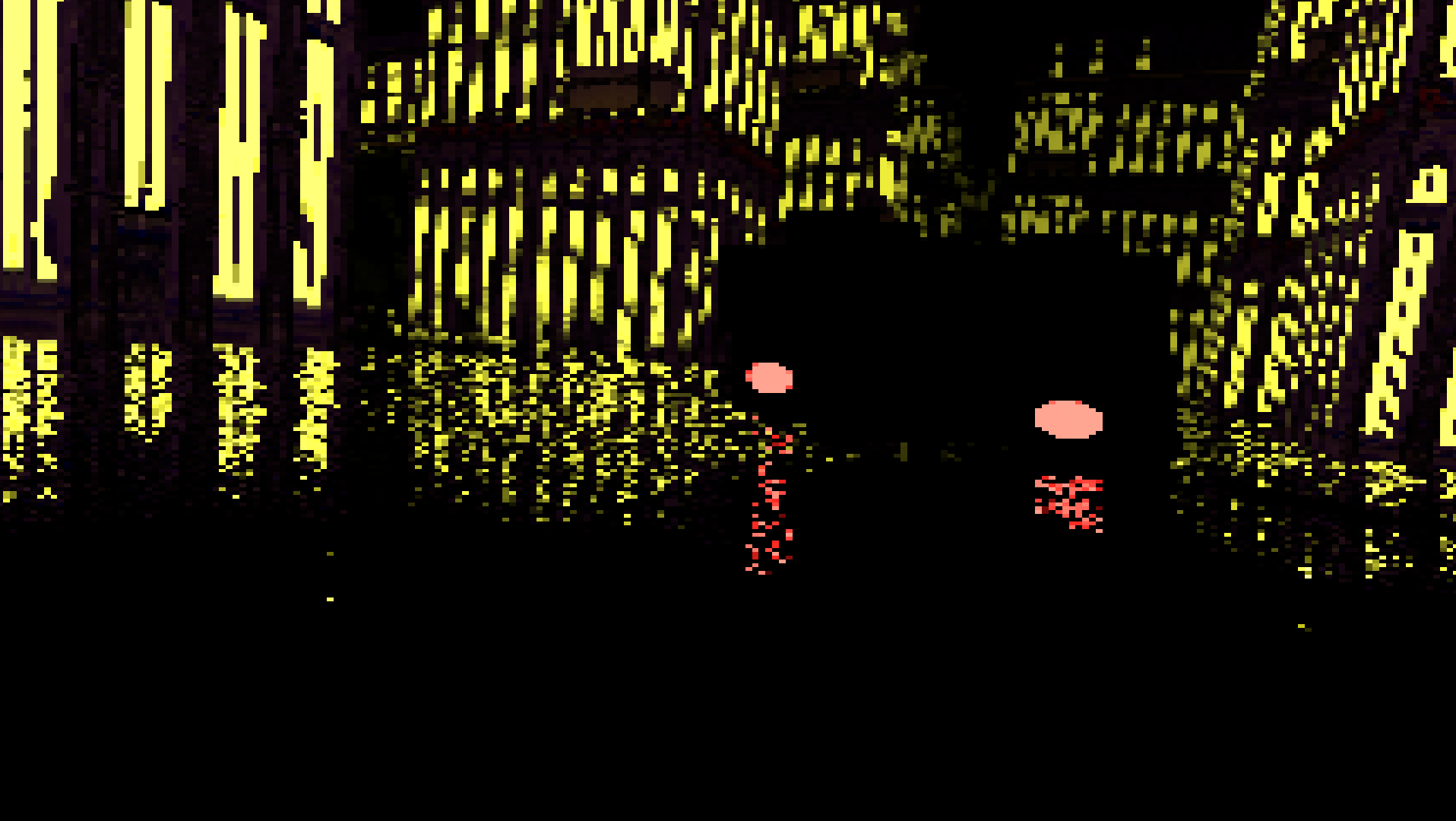
This one is described as a moodpiece. I love the term, and wish it where used more. It’s a wonderful description for games like this. Like a lot of Pol Clarissou’s work it has a unique touch of melancholy, mood, sincerity, contemplativeness… that’s just lovely to exist in as a spectator. Playing Pol’s work is like wrapping yourself in a warm blanket of mood.
What I love about “the nightmare of a city i thought i knew” is its simplicity. It’s very stripped down, and abstract. You walk out of a subway and you’re among the gentle glow of buildings. As I was walking, a car came out of nowhere and gave me a heart attack. It was a good jump scare that was also kinda realistic for a city. If you stay still things settle down and you can see. If you move things deteriorate and you’re lost in reality dissolving around you.
Like I mentioned, I think it’s special for how simple it is. Things don’t have to be huge, or elaborate, to be engrossing experiences.
I feel like if this where much more polished, or more elements added to it, it would lose much of its impact. Simplicity communicates too. There’s value in doing something small really well.
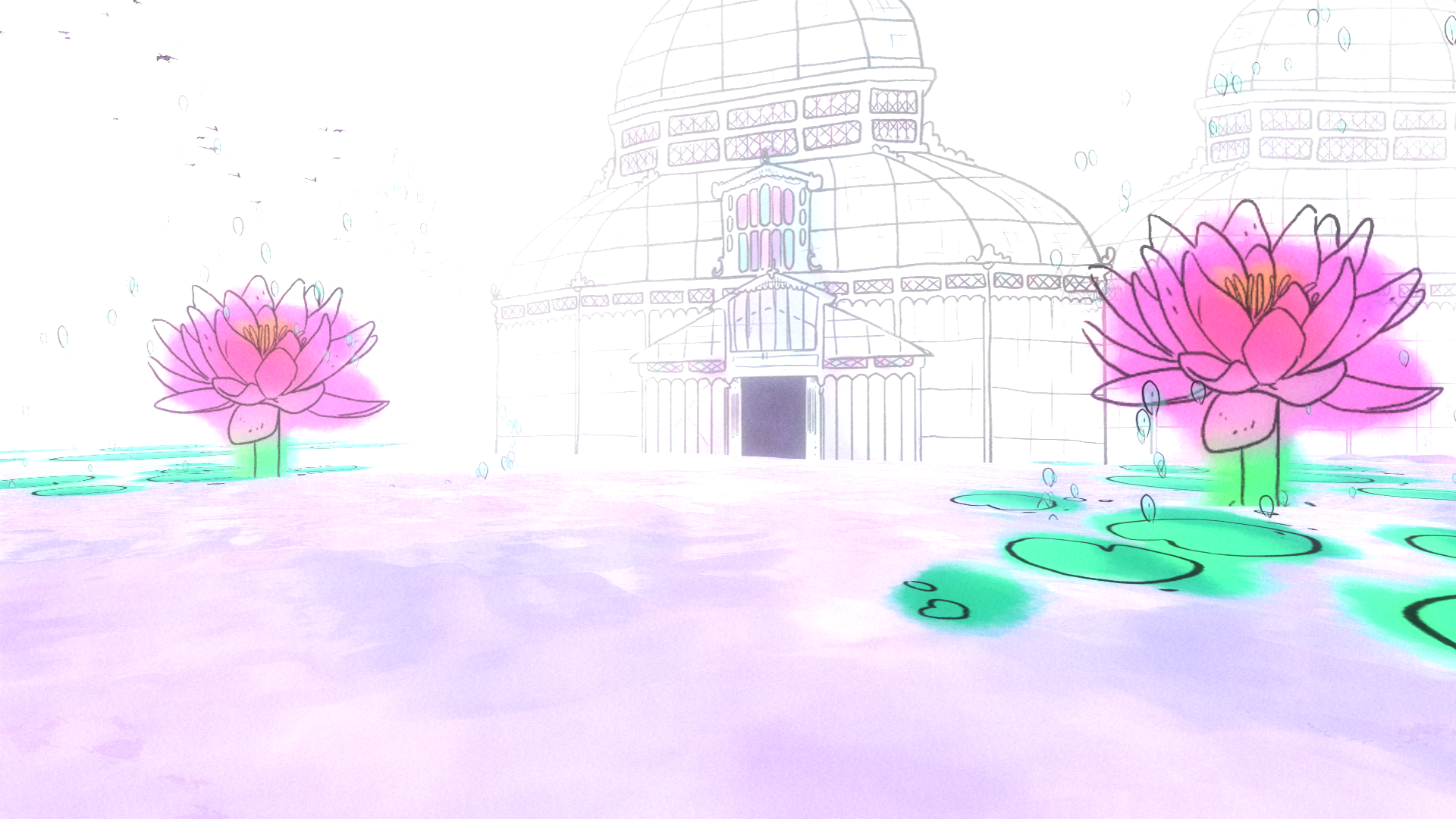
Sacramento is a much more gentle environment than these other examples. What I love about it is its style.
It’s described as a game about capturing moments before they drift away. I think the watercolor style communicates this amazingly. While you’re in it, you have a sense that things are fading, floating, being lost, dissolving. It’s moody, but in a subtle way. The act of wondering is what makes this engaging.
In all of these cases doing abstraction well is what matters. Pick a mood and build around that. That mood will communicate what you’re trying to say, whether it’s disturbing, or gentle. Glitch or melancholy…
All sides of this spectrum mater, and exploring these feelings in these various environments is impactful. I realize that a lot of these examples have been 3D but that’s not exactly necessary.
2D environments can work just as well to communicate such emotional depth (2D is my personal preferred choice for reasons I won’t get into now). Loren Schmidt’s work, and thecatamites games are good examples.
I think what’s important is the framing. How are you contextualizing deterioration, loss, fading, change, conflict…
I think one important thing to focus on is not emphasizing traditional “game” but trying to understand communicating feelings through interaction.
Abstraction is powerful because it allows space for the person that’s playing it. You allow them to read themselves into it, and they become part of the piece in that sense.
Like with Conversations We Have In my Head, it’s even good to not require interaction for the thing to function. It doesn’t need you as a player, but rather an optional participant. How you struggle to make sense of what you’re in can be a profound feeling.
This type of space, and the way it encourages the person that’s interacting with it to be open minded, listen, and pay attention, is a beautiful way of communicating personal messages.
It’s already set up as a vulnerable setting because the person playing has to pay attention. Playing it is personal for how they’re required to have a level of open mindedness to understand.
So when you work in your own personal secrets, meanings, super vulnerable things that you want to say, it kind of creates a beautiful setting for getting to know someone.
I think it’s particularly effective if you bury your personal stories, and these are things that have to get found. The same way as you earn someone’s trust, and then they open up to you, you engage with the game by paying attention to how it works and then it opens up to you.
It feels special for the person finding the little hidden gems. You can experience the piece on the surface, and that’s fine, but you can get to know it too.
I think this is beautiful framing.
On another note… To me games like these are vital. They’re like the catnip of inspiration. I love the ones that are visually intense, and kind of violating for how “loud” they get aesthetically.
Our dreams are strange surrealist places. We can vaguely describe them, but the people we describe them to will never really understand the beautiful spaces we’re in when we sleep. Language fails us when talking about things that are so different, unique, and specific. It’s best to experience for yourself.
I realize that we joke about these games as “drug trips”, but if you set aside the dismissive language, this is an amazing space of games to explore.
We can finally communicate these powerful surrealist trips as close to how we dream, daydream, or fantasize about them.
They are spaces that exist only in the author’s head. Here the author created that very unique world for you to drift through, the same as we drift through our dreams. Nobody but the person that created these could imagine these ideas, strange spaces, surreal imposing environments… It’s really unique to the creator.
When you play these you’re playing a small “one in a million gem”. Someone made something beautiful for you to experience.
If you resonate with it, that’s love shared between you and the person that made it.
Enjoy the lovingly crafted trip.
first of all, congrats on coming out! that’s so awesome and i’m happy for you!!
i love this article, but the only problem is that i haven’t played them all so i had to skip some of the paragraphs! lol. i have more games to play now i guess!
as always, i appreciate you sharing your thoughts because you’re awesome and an inspiration.